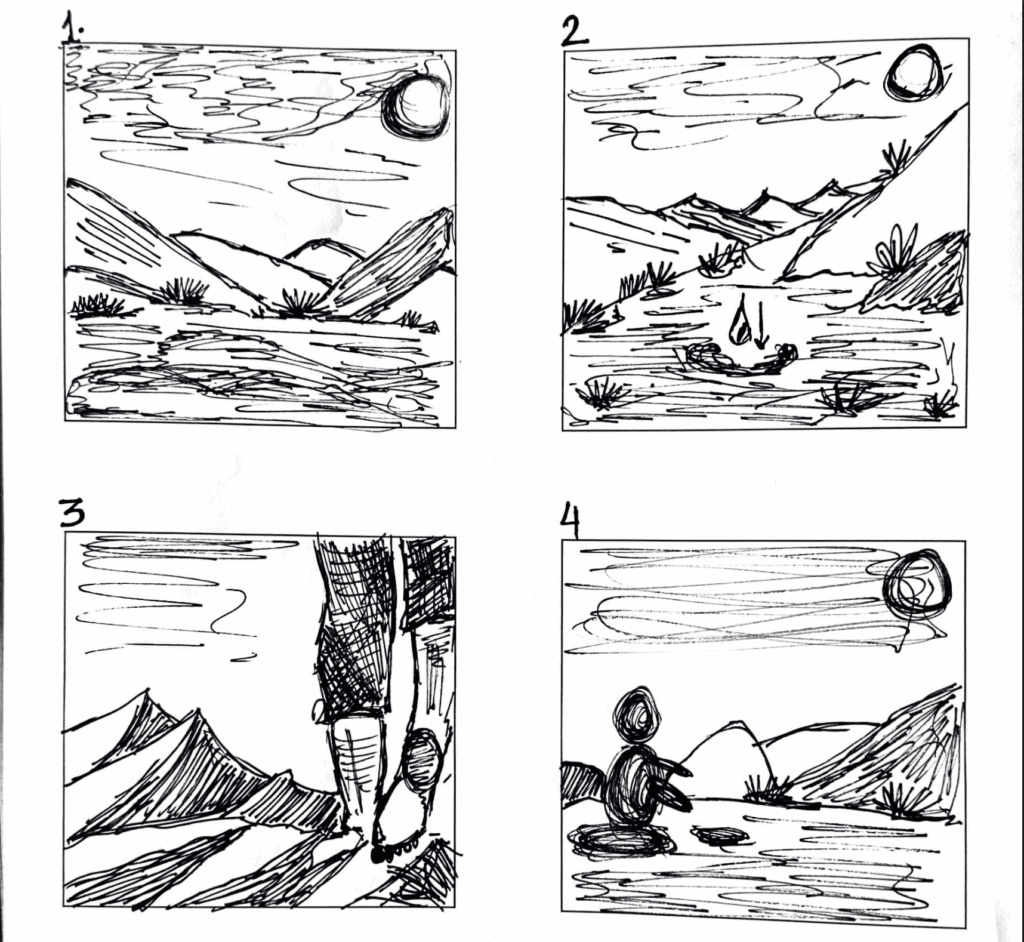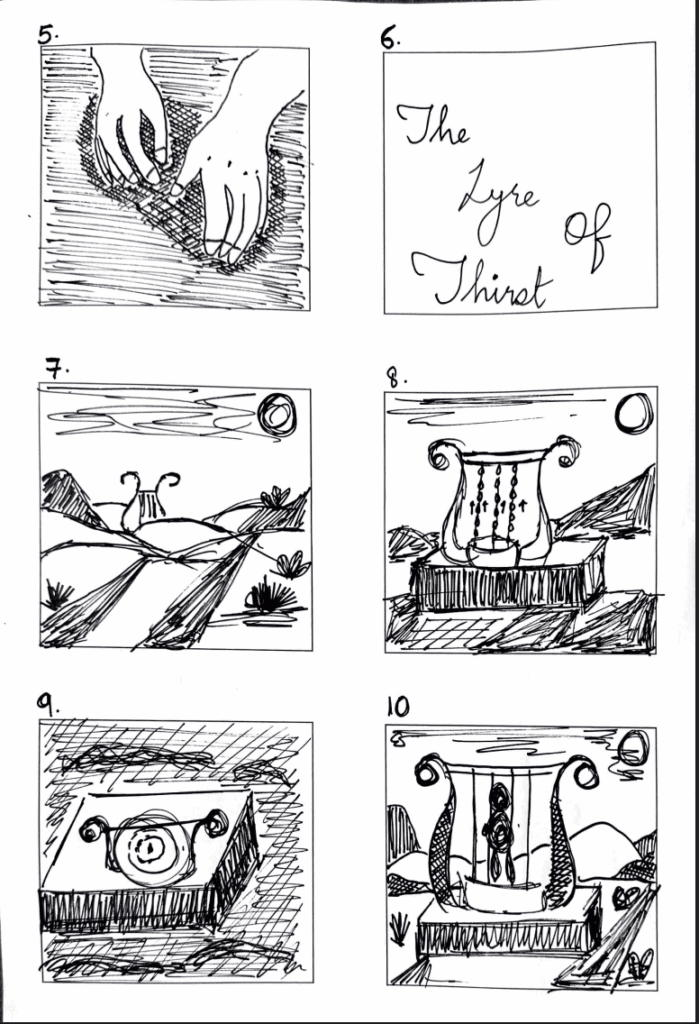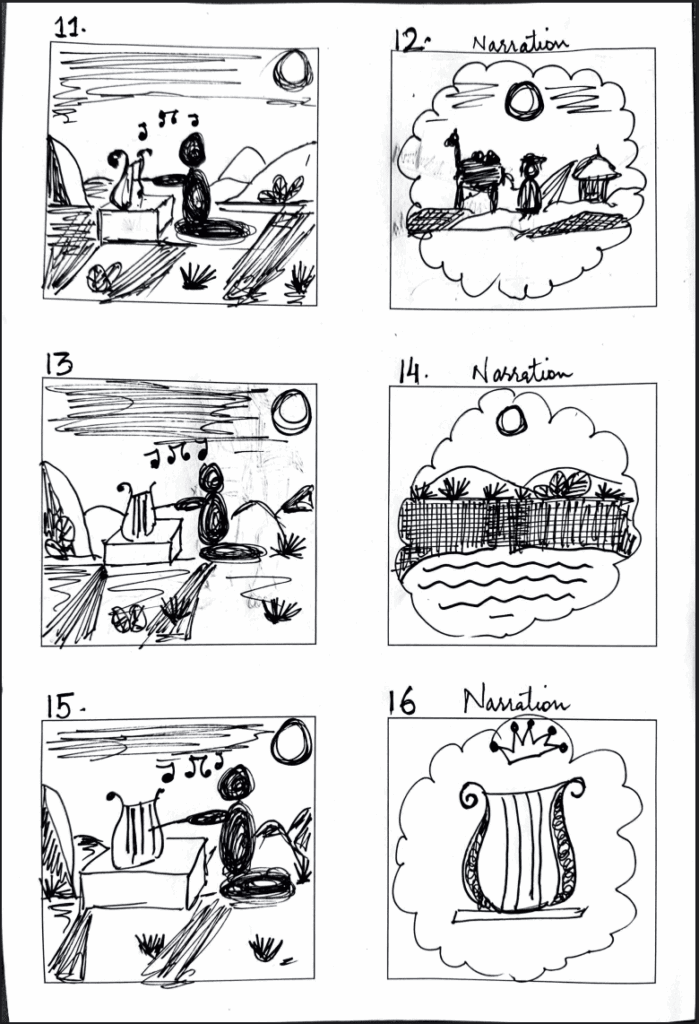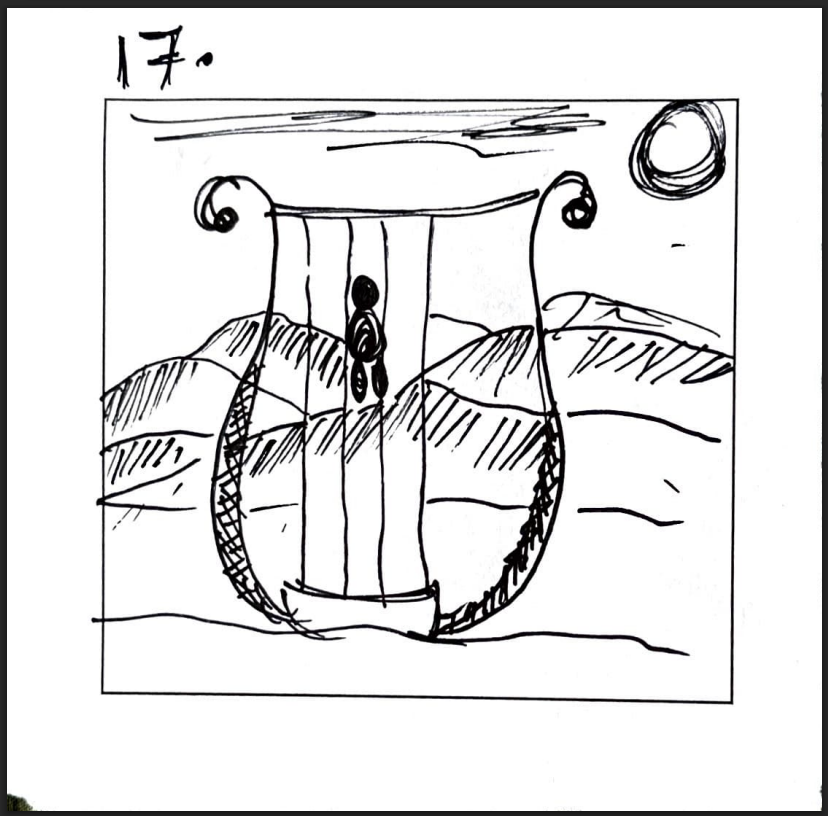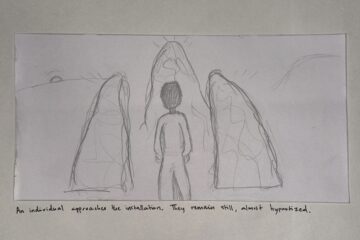Shot 1:
The opening begins with a low-angle shot taken from ground level, looking up slightly. The camera captures a vast, cracked desert floor — dry, lifeless, and sunbaked. The wind kicks up small clouds of dust, and the barren landscape stretches endlessly.
Shot 2:
Suddenly, a single drop of water falls from above. The camera, still in a low-angle position, captures this drop hitting the parched earth, a striking contrast to the dryness below.
Shot 3:
We now see a person walking slowly into the frame. Only their legs and torso are visible, and their face remains hidden. Their steps leave faint impressions in the dust as they move with purpose.
Shot 4:
The camera shifts to a top-down view. The person kneels down and begins to dig into the sand with their hands. Only the hands are shown scooping away the dry top layer.
Shot 5:
As they dig, they reach a patch of damp sand. The moisture beneath the surface is revealed, hinting at life or something hidden below.
Shot 6:
Cut to a black screen with the title “The Lyre of Thirst” written in clean, bold text, simple, stark, and powerful.
Shot 7:
We cut back to the desert. A lyre is partially visible, with a dune covering its lower half. This is captured from a low angle to give it a sense of mystery and importance.
Shot 8:
The full lyre is now uncovered and still. Suddenly, water appears to flow upward from the ground along the strings. (This is done by recording water falling with a pump and reversing the footage, so it looks like the water is defying gravity.)
Shot 9:
From a top-down perspective, we see water flowing down from the lyre’s strings into a small, bucket-shaped basin below, gently filling up.
Shot 10:
The camera shows a man approaching the lyre from behind. Again, no face is shown, just his lower body, and he kneels in front of the instrument.
Shot 11:
From the side, we watch as the man gently touches the first string of the lyre.
Shot 12:
At this moment, an overlay video begins. This means that while we still see the man and the lyre in the background, another video is shown on top of it, semi-transparent; in this case, footage of Bedouins walking in the desert (sourced from YouTube).
* Overlaying is when two videos play at the same time, one layered over the other, creating a blended visual.
Shot 13:
The man touches the second string.
Shot 14:
Another overlay appears, but this time, visuals of underground water streams, possibly created with AI or animation, play faintly over the scene. This is to recreate the image of the UAE’s oases and how they get water from underground.
Shot 15:
He touches the third string.
Shot 16:
An overlay begins showing a scene of King David (from historical or cinematic footage), symbolizing the ancient spiritual significance of the lyre.
Shot 17:
Finally, from behind the lyre, we watch the man stand up and walk away slowly. The camera holds this view as the screen gradually fades to black, bringing the film to a quiet, contemplative end.
